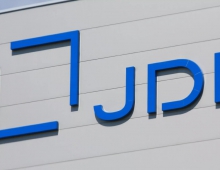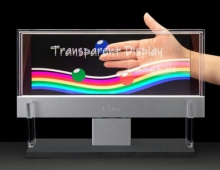
Japan Display Secures Government-Backed Fund, Acquires JOLED
Japan Display has agreed to a 75 billion yen ($637 million) injection of cash from Innovation Network Corp. of Japan, which is already its largest shareholder. The company has also acquired the majority stake of JOLED.
INCJ created Japan Display by merging the screen-making units of Toshiba Corp., Sony Corp., and Hitachi Ltd.
Japan Display is headed for a third-straight annual loss, as global mobile demand sputters and competitors from Korea and China undercut prices to grab market share. Japan Display said it will use the capital for the development of organic light-emitting diode displays. Apple, its biggest customer, is considering shifting to next-generation smartphone screens as early as 2017.
Japan Display will issue 45 billion yen of convertible debt to INCJ and also get a 30 billion yen subordinated loan from the entity, Japan Display said on Wednesday.
The display maker also announced on Wednesday that it is raising its stake in JOLED Inc., a Japanese OLED-display maker, to 51 percent from 15 percent, through a transfer of shares held by INCJ to Japan Display.
JDI is working on the development of medium-resolution OLED displays that use the printing method to differentiate from high resolution small-sized OLED displays that use the vapor deposition method.
It is considered that the printing method can reduce production costs compared with other production methods of OLED displays. However, at present, no company mass-produces OLED displays that use the printing method. JDI estimates that JOLED will be able to achieve early commercialization of OLED displays that use the printing method.
Furthermore, the JDI group and JOLED will promote the development oxide semiconductor technology and flexibile technology, in order to provide early commercialization.
The competitive environment has intensified in the the small- to medium-sized display industry due to active marketing for organic light emitting diode (OLED) displays by Samsung, as well as improvements in manufacturers' technological capabilities and establishment of new G6 LTPS (low temperature poly-silicon) plants in China and Taiwan.
Currently, sales of the JDI group's mobile device category focusing on the products for smartphones account for approximately 80% of the JDI group's total sales.
The JDI group is working on the enhancement of its automotive category, which is expected to grow in the future, and the early launch of a new business, and is promoting the increase of the percentage of sales of the non-mobile business. The JDI group aims to expand its business by accelerating the development of displays for 2-in-1 notebook PCs; ultra-high resolution displays for VR (virtual reality) devices which make use of the characteristics of LTPS; reflective-type displays with features of high outdoor visibility; and ultra-low power consumption and new displays in various fields such as avionics (aviation-related field), healthcare and education.
The JDI group seeks to maintain and improve its competitive advantage by developing and supplying products based on LTPS technology, which is the JDI group's strength. Among them, the "FULL ACTIVE" display, which is an LCD display that has a narrow bezel design on all four display sides, allows the size of a device such as s smartphone to be nearly the same as the display size. This new display is scheduled to start shipping in the fourth quarter of 2016.
In addition, the the JDI group will focus on the development of flexible displays. By using plastic, instead of glass, for their substrate, flexible displays will have characteristics such as an ultra-thin structure, a light weight and a bendable and unbreakable structure. Such displays are expected to be used in various applications such as not only for mobile products but also for tablets, notebook PCs and automotive displays.
Japan Display and Sharp may need massive amounts of capital to invest in OLED, considered the future standard for iPhones and other mobile devices. Apple is struggling to find enough OLED supply for its new iPhones, expected next year.




















